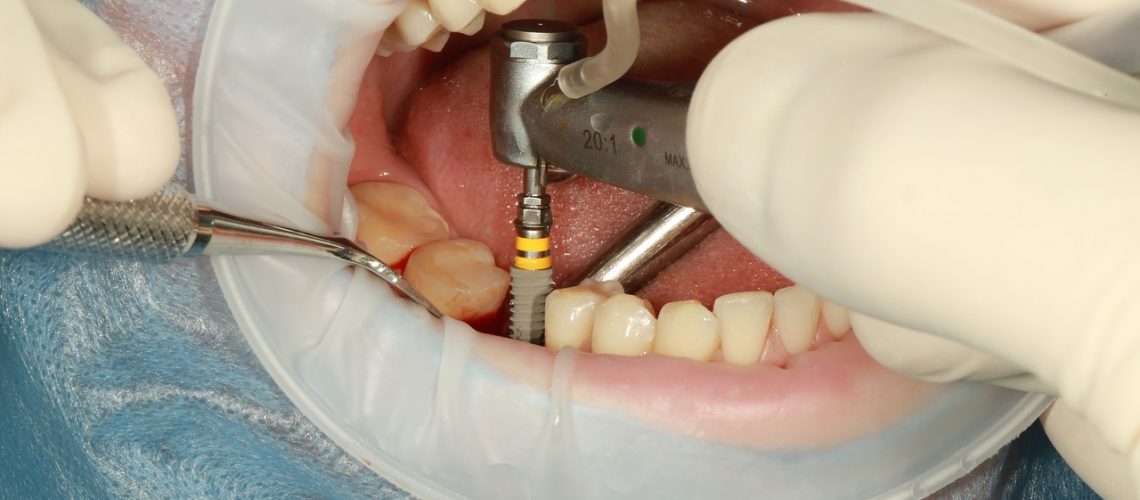Getting The Dental Sense To Work
Table of ContentsOur Dental Sense IdeasFacts About Dental Sense RevealedThe smart Trick of Dental Sense That Nobody is DiscussingThe Basic Principles Of Dental Sense
are medical tools surgically dental implanted right into the jaw to recover a person's ability to chew or their appearance. They give assistance for fabricated (phony) teeth, such as crowns, bridges, or dentures. When a tooth is lost because of injury or illness, an individual can experience difficulties such as fast bone loss, faulty speech, or modifications to eating patterns that lead to discomfort.Dental dental implant systems are composed of an oral implant body and dental implant abutment and might also include an abutment fixation screw. Same day dental implants. The oral implant body is operatively put in the jawbone in location of the tooth's origin. The dental implant abutment is usually connected to the dental implant body by the joint addiction screw and extends through periodontals into the mouth to support the attached synthetic teeth
(https://dentalsense1.wordpress.com/2025/01/11/dental-implants-root-canal-procedures-professional-teeth-whitening/)Framework of The Dental Implant System selecting oral implants, talk with your oral company about the potential benefits and threats, and whether you are a candidate for the procedure. Things to think about: Your overall health and wellness is a vital consider identifying whether you are a great candidate for oral implants, for how long it will take to heal, and exactly how long the implant may remain in location.
Smoking may impact the healing process and decrease the lasting success of the implant. The recovery procedure for the dental implant body may take several months or longer, throughout which time you generally have a temporary joint in place of the tooth. the dental implant procedure: Carefully comply with the dental hygiene guidelines provided to you by your oral copyright.
The smart Trick of Dental Sense That Nobody is Talking About
Implant failing can result in the requirement for an additional medical treatment to take care of or replace the implant system. Recovers the ability to chew Restores cosmetic look Assists keep the jawbone from shrinking because of bone loss Preserves the wellness of the surrounding bone and gum tissues Helps maintain nearby (neighboring) teeth stable Boosts lifestyle Damage to bordering all-natural teeth throughout implant positioning Injury to the surrounding tissues throughout surgical treatment, such as sinus opening Injury during surgical procedure (for example, fracture of bordering jawbone) Poor feature, such as feeling like the teeth do not bite with each other typically A feeling that the tooth hangs or turning in position arising from a joint screw loosening up Implant body failure (looseness of the implant body) because of systemic infection, which may be most likely in patients with uncontrolled diabetics issues because of regional infection in bone and periodontals supporting the dental implant body due to delayed healing, which might be more probable in people that smoke Problem cleansing the periodontals around the implant, leading to inadequate dental health Without treatment periodontal illness Post-surgical pins and needles due to nerve impingement or damage Constantly inform health and wellness care carriers and imaging service technicians that you have oral implants before any type of magnetic vibration imaging (MRI) or x-ray procedures.
FDA is not familiar with any type of adverse occasions reported for MRI or x-ray procedures with dental implants. Oral implants systems are normally made of materials that adhere to global consensus criteria of the International Organization for Standardization (ISO) or ASTM International. These requirements have information of what makes a safe material.

An oral implant is a framework that changes a missing tooth. With screw-like tools, the doctor inserts a dental implant right into the jawbone, and it acts as an anchor for a fabricated tooth, called a crown.
Rumored Buzz on Dental Sense
Some individuals are not qualified for dental implant surgery. It is for oral specialists to run on individuals with: intense illnessuncontrollable metabolic diseasebone or soft tissue condition or infectionIf these concerns are dealt with, a person can have the surgical treatment. In, oral specialists avoid operating people with: If people with any of the above go through dental implant surgical procedure, there is a greater danger of the dental implant falling short.

Oral implant surgical treatment is a tailored process. It's not the very same for everyone. Yet the following provides a general review of address what you can anticipate your dentist, oral surgeon, periodontist or prosthodontist to do: Position the implant operatively. Give you time to recover. Attach the post and last crown, bridge or denture.
Next off, your doctor will carefully place the oral implant into your jaw. If your implant is near the front of your mouth, your dental professional will make a short-term tooth for you to use up until you recover.
9 Simple Techniques For Dental Sense
Your service provider can inform you what to anticipate in your scenario. During the healing phase, your jawbone needs to fuse to the oral implant. This procedure, called osseointegration, is vital for security and lasting success. This procedure can take anywhere from three to 9 months. Sometimes, it may take longer.
When your dental implant heals, your dentist can affix the joint (small port post) and your last restoration (crown, bridge or denture). This normally takes about one hour to complete and may need a 2nd small surgical treatment. You shouldn't really feel any discomfort throughout your dental implant procedure since your provider will certainly use medication to numb your gum tissues.
 Ralph Macchio Then & Now!
Ralph Macchio Then & Now! Judge Reinhold Then & Now!
Judge Reinhold Then & Now! Tyra Banks Then & Now!
Tyra Banks Then & Now! Batista Then & Now!
Batista Then & Now! Tina Louise Then & Now!
Tina Louise Then & Now!